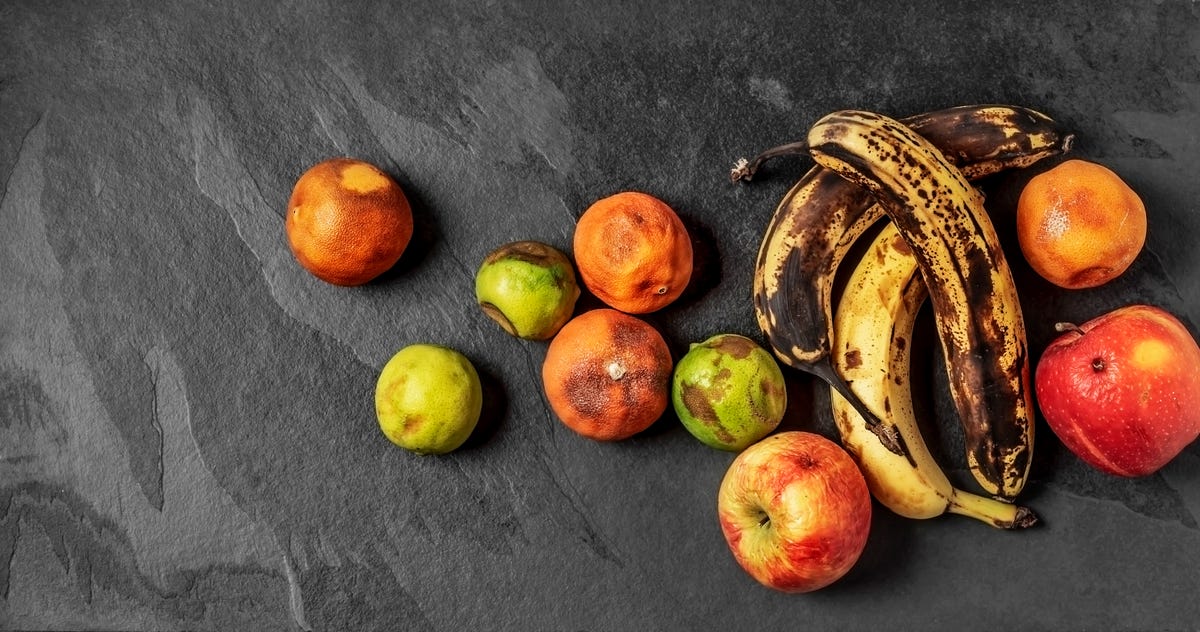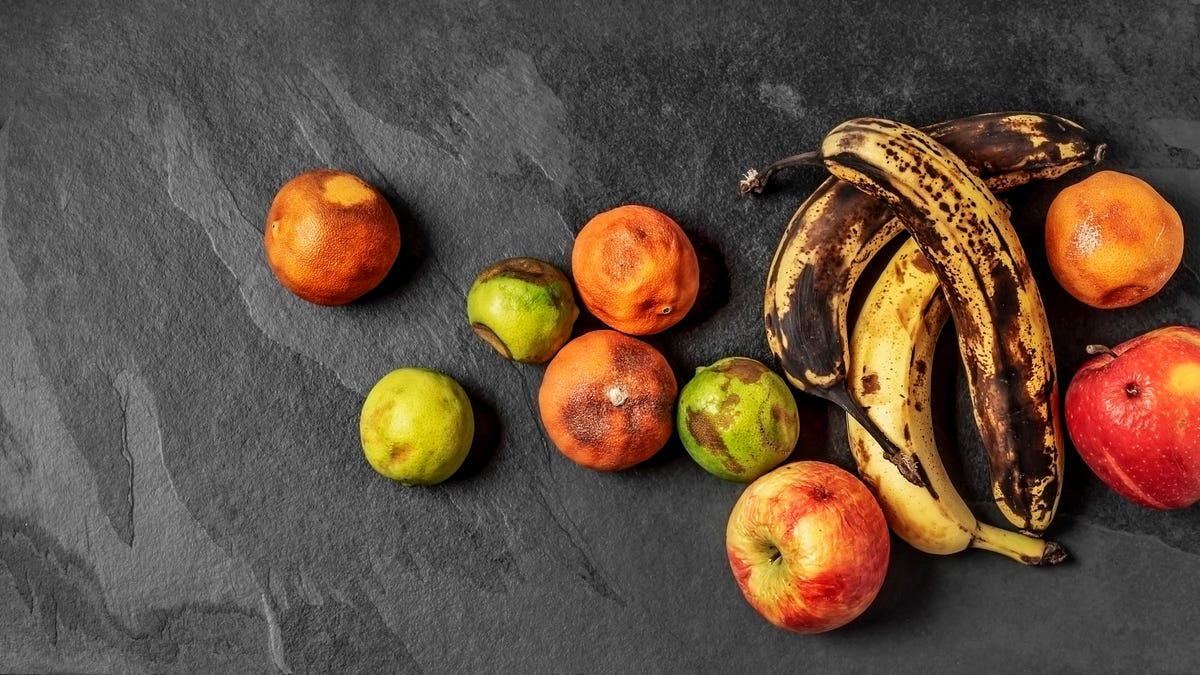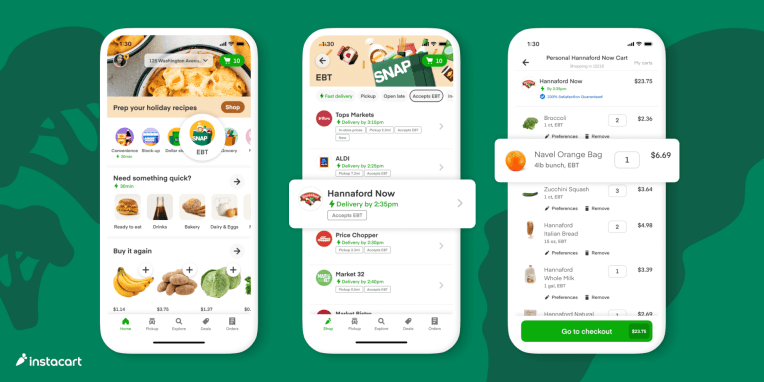Get the most out of your groceries: How to prevent food waste

In the United States alone, 31% of the available food supply at retail and consumer levels went to waste in 2010. This was valued at about $161 billion in food waste at the time.
As you read this, you may recognize how you inadvertently contributed to that statistic; maybe those bags of spinach or that old chicken that went uneaten come to mind.
But considering almost a third of our food goes straight to the trash, how can we prevent food waste?
I’m not here to finger-point or judge, I’ve been part of the problem as well. It’s like we decide to temporarily house food in our fridge rent-free on its journey between the store and the trash, throwing away our hard-earned money. But it’s well past time to become part of the solution.
Also: I cut my streaming bill in half and you can too
How to prevent food waste
Food waste is an environmental and financial issue. While extreme hunger is a problem in many countries around the world, others are throwing a third of their food supply in the trash. Personally, I feel like I’ve failed at planning and organizing my week whenever I end up tossing out perfectly good food, and that combined with the environmental impact has motivated me to change my habits.
Determine what ends up in your trash every month. Is it the unopened bags of wilted spring mix or quarter of a pack of cheese? This is a basic first step to stopping food waste in your home: Know what you’re not using so you know know what to stop buying — but it’s easier said than done.
Also: How to create a grocery budget
We generally start planning our groceries by thinking of what we’re going to cook and eat for the coming week. This process ideally happens at home, but it also happens when we’re already at the store. Maybe you’re walking around the produce aisle and decide to be extra-healthy this next week and buy several bags of salad mix, only to have life happen in the following days and then you find yourself throwing away the untouched food when it’s gone bad.
And it doesn’t only happen with produce; 30% of the total food loss in 2010 consisted of meat, poultry, and fish. These items notoriously make up the most expensive food group in the American diet. So food waste isn’t just an environmental problem; it’s a financial one as well, one that affects us all personally.
Quick tips:
- Buy frozen: Did you know some frozen produce can contain more nutrients, like more vitamin C, than the ones in the produce aisle? Produce is picked at the peak of ripeness and frozen before it starts to decompose; plus, frozen produce lasts longer before going bad.
- Toss it into the freezer: Instead of the trash, your bag of spinach can find a new home in your freezer to be used for smoothies or recipes calling for frozen spinach. This is the case for most fruits and a lot of vegetables as well.
- Don’t buy it: If you’re consistently tossing the same items untouched, give yourself permission to not buy them or buy smaller packages. Save that money for something you’ll actually consume or enjoy.
Different shopping habits may mean grocery shopping with convenience in mind, but you can do this without sacrificing health.
Like many other parents in the US, we don’t have the village it takes to raise kids, so it’s all on my husband and me. Food goes bad in the fridge because we forgot about it or we were too busy and didn’t have time to cook it before the kids’ bath and bedtime. So the convenience of ordering something often wins.
Meal planning doesn’t really solve all these issues. While I’ve always loved cooking and still do, I’ve come to realize that making full meals from scratch multiple times a day every day of the week isn’t something I can manage without failing to do something else for my kids. As a result, I’ve changed my shopping habits to include more convenient options that better fit my busy life.
Quick tips:
- Shop for convenience: Instead of choosing the fresh salad mix, I’ll buy other vegetables that don’t go bad as quickly, like tomatoes, avocados, and broccoli, or frozen vegetables.
- Plan what you can: Instead of meal planning and cooking on the weekend for the entire week ahead, I lean on leftovers when making my shopping list. So maybe I’ll cook a larger package of ground beef for spaghetti but leave half for tacos the next night, making the next meal easier and quicker.
- Buy what you love: Preventing food waste doesn’t mean you have to skip buying all the things you like; just buy less. If you like apples but end up throwing away half the bag when it goes uneaten, try buying two or three apples instead of a whole bag.
This all seems easy enough, but it makes a real difference to my bottom line, my mental health, and the amount of food that goes to waste.
Also: How to cut your grocery bill by shopping online
This is where a freezer would be a lifesaver to prevent food waste, but you can’t just freeze everything and continue buying the things you won’t eat.
The foods that go bad the most often in my home are vegetables and chicken. Things like zucchini, carrots, peppers, and onions are quick to make a break for the trash can, only to be replaced the next week by the same items. With time, I’ve learned to not buy them unless I have a clear plan for a recipe that calls for them and the ones I do buy I gather and blend into sauce or soups when I see they’re going unused.
Quick tips:
- Set reminders: Check expiration dates and set reminders on your phone for the things you really want to use before they go bad.
- What to do with meat that is going to go bad: I started to double up while cooking. I’ve found I’m less likely to throw away meats if they’re cooked because by then it’s easier to add them to a meal. If some chicken is about to go bad in the fridge but I’m cooking burgers that night, I’ll make the burgers and have the chicken cooking in a separate pan at the same time. Then just put the cooked chicken in the freezer to add to salads or other meals and I won’t have to buy new chicken the next week.
- What to do with those extra uneaten veggies: All it takes is to cut them up and roast them in the oven for a little bit with some seasoning, then blend them all together. This makes for a tasty sauce and soup thickener, but also a way to sneak in extra veggies into pasta sauce for kids. Plus, you can freeze this mixture.
- Get creative: If something’s about to go bad in your fridge or pantry, look up a recipe that includes it. Maybe you can put that ingredient in a casserole, or make your own trail mix with it.
If the mention of meal kits makes your wallet wince, don’t fret. There are affordable meal kits out there that can actually help you save money and reduce food waste.
I really love cooking and feeding my family whole foods but needed something convenient, and making boxed mac and cheese every night wasn’t going to cut it. This is why I started using EveryPlate. It’s an affordable, family-friendly meal delivery service that sends us enough ingredients for five recipes a week, each one for four people. Since me and my partner have three kids under six, it works out, sometimes leaving us with enough leftovers for a lunch for two.
Also: Meal delivery services that start at $5 per serving
Having a meal kit service takes the guesswork out of what to make for dinner, and leaves me only worrying about groceries for breakfast, lunch, and snacks, but it also opens us up to new recipes and less food waste. Since we get exactly what we need for each recipe, we rarely throw any of the meal kit food away. If a recipe calls for a side of veggies that my kids won’t eat, I know I can simply blend those and add them to a sauce or soup.
Meal kits often come with their own environmental concerns with increased plastic packaging, but recent studies show that meal kits actually leave a smaller carbon footprint than grocery meals.
Quick tips:
- Shop around: Look for the best meal kit service for your budget. For our EveryPlate subscription, the cost for the five meals at four servings each is about $112 a week, which is a lot less than eating out. This is one way we’ve effectively reduced both our grocery costs and our food waste.
- Take advantage of coupons and new customer offers: Our first box cost less than $50 and the next few boxes were 20% off. Most others also offer deals for joining their service.
FAQ
Why is food waste a problem?
Though overproduction is one main problem of food waste in the US, there’s also the issue of consumerism. According to the American Psychology Association, consumersm is partly driven by constant demands on our self-control. Our attention is being pulled in all directions and drawn to buy things we don’t need, including different food items that end up going uneaten.
Uur municipal solid waste generation per capita has increased by almost twice as much since the 1960s. A third of the food at retail and consumer levels ends up as waste, of which more than 55% is sent to landfills, while the rest finds other food management pathways such as combustion, composting, donation, and land application.
If we continue to buy foods regardless of whether they end up in the trash a week later, we maintain the demand for those foodstuffs, and the suppliers will maintain the same size of carbon footprint. Though the problem should be tackled by those suppliers first, we have control over what not to buy and how to manage the foods that do go uneaten.
Not buying the food items that constantly go to waste in your home will reduce your carbon footprint as well as saving you money.
What are examples of food waste?
Food waste includes any food that was not consumed: leftover food on your plate, uneaten prepared food, and expired uncooked foods. It happens in private homes, at retail stores that sell foodstuffs, and at restaurants and cafeterias.
Does composting help with food waste?
Composting is one of the best ways to prevent your household’s food waste from ending up in a landfill. If your city has a composting service, it’s always a good idea to take advantage of it to reduce your carbon footprint and support the effort. Considering that only 4% of waste was composted out of 63 million tons of food waste collected in 2018, it’s safe to say that composting has some room to grow yet.
If you have access to a garden and want to make your own compost, you can dispose of uneaten foods directly into a bin that you empty into a designated area of garden every few days.
While most food scraps can be composted, there some types of food you want to keep out of the compost bin: Uncooked meats, for example, can harbor bacteria like E. coli that can thrive in your compost bin and pile, making it easy for cross-contamination to happen and make you or family members sick. Meat can also draw unwanted animals to your composting pile, so don’t add it to your compost. Many city composting services do accept meat scraps and bones, so check with your local city requirements.
Is there an app for fighting food waste?
There are mobile apps with the purpose of preventing food waste. Here are a few at the consumer, retail, and supplier levels:
- Olio: This app helps you connect with others looking to share food from their homes instead of throwing it away, all for free. Take a photo of the item you won’t eat and set the pickup location. The idea is that others looking through the listings will connect with you and the free food exchange will save the items from the landfill.
- Too Good to Go: Connects you to different restaurants, bakeries, and some retail stores that offer their foods that are about to expire or go to waste, letting you instead pick them up for a heavily discounted price.
- Misfits Market: Unfortunately, a lot of the foods that go to waste in the agricultural and retail sectors end up in landfills due to not being attractive enough to be sold. Misfits Market sells organic products with minor imperfections that don’t affect food quality at up to 40% less than grocery stores, so it doesn’t get tossed.




